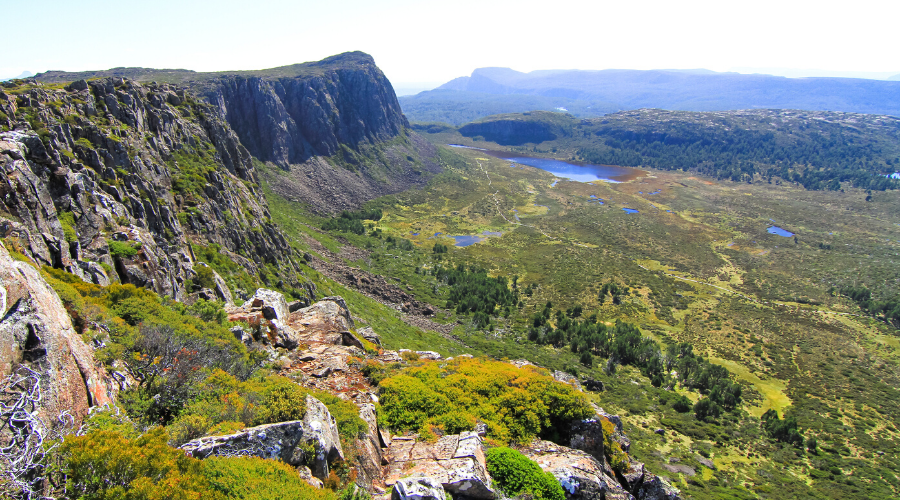Media Releases - 26 June 2020
The Wilderness Society Tasmania’s response to the Draft Tourism Master Plan

The draft Tourism Master Plan (TMP) for the Tasmanian Wilderness World Heritage Area (TWWHA) was released for public comment in March 2020. The comment period has been extended to 25 June in recognition of the disruption caused by COVID-19. The drafting of the TMP responds to a recommendation of the joint IUCN / ICOMOS Reactive Monitoring Mission in 2015 that followed concerns regarding the then-draft TWWHA Management Plan expressed to the World Heritage Committee.
The final (watered-down) 2016 TWWHA Management Plan requires the development of a “Tourism Master Plan for the TWWHA in consultation with the tourism industry, Tasmanian Aboriginal people and other key stakeholders”.
The Wilderness Society Tasmania, along with other environment groups, has decided not to participate in the consultation process on the TMP for the following reasons.
The draft plan looks beautiful. There are luxurious photographs of wilderness. It says all the right things. But it is an exercise in parallel universalism because, while consulting on a tourism master plan, Tasmania’s Liberal State Government’s policy is to “unlock” Tasmania’s national parks to private comercial tourism development, which degrades natural and wilderness values and excludes existing users. There is a direct contradiction between the TMP and with the policy reality ‘on the ground’.
A good example of this policy incoherence is in the section of the plan that discusses the TWWHA’s Self-Reliant Recreation Zone, which it describes as somewhere people “can achieve a high level of independence in experiencing the Tasmanian wilderness… good old-fashioned peace and quiet [and connect] with nature through quiet contemplation”.
This is the very same zone that the Government is actively helping to privatise for the luxury, helicopter-accessed accommodation that constitutes Wild Drake’s Lake Malbena proposal.
The Government’s policy is to ‘unlock the parks’, which effectively entails the privatisation of Tasmania’s national parks and World Heritage wilderness. The means by which this policy of park privatisation happens is through the Government’s tourism Expressions of Interest process, which solicits proposals from developers to develop national parks. (The Government refused to pause the EOI process, while consulting on this plan.)
There is also the Government’s overarching tourism policy, T21, which has a single priority: to increase the number of visitors to Tasmania (to 1.5 million by 2021). This is a fundamentally unsustainable approach to tourism in Tasmania, especially with regard to the State’s national parks and wilderness areas. These two policies and the EOI process don’t feature significant requirement for sustainable tourism.
The TMP acknowledges (p54) that high visitor numbers … can result in poor experience, negative environmental impacts and recreational/visitor displacement. But the plan doesn’t provide advice on how to manage these impacts, which are the direct result of Government tourism policy.
The Tourism Master Plan is non-statutory, and can only seek to influence tourism policy within the parameters set by the statutory TWWHA Management Plan. On the basis that it is not a stand-alone plan to guide the future of tourism in the TWWHA. Therefore, there is little scope for the TMP to affect tourism policy.
Tasmania lacks any sustainable tourism criteria and the TMP fails to discuss how a framework could help tourism operators moderate impacts on the TWWHA and for visitors to know whether a tourism operator takes sustainability seriously or not.
The importance of protecting the Outstanding Universal Value (OUV) of the TWWHA is mentioned frequently but there is little or no mention of protecting lesser, but still significant, natural, ecological and cultural values, including Aboriginal cultural heritage, especially protecting the experience of existing users.
The vast majority of objections to the proposed Lake Malbena helicopter accessed tourism development related to the impacts of the proposal on the wilderness experience of existing users. The plan fails to set out how it would manage this issue.
Despite acknowledgement that wilderness is fundamental to the integrity of the TWWHA (management plan, page 174) it fails to include criteria about how to protect it.
The Plan’s definition of ‘sustainable tourism’ is not credible, describing it as “a level of tourism able to be maintained, including at a certain rate of growth, taking into account social, economic and environmental factors”. This definition is not consistent with industry best practice, which offers more credible and rigorous definitions of sustainable tourism.
The United Nations Tourism World Organisation (UNTWO), the Cape Town Declaration and Global Sustainable tourism Council all provide strong definitions of and criteria for ‘sustainable tourism’ to a stronger standard than the TMP’s definition.
Recent history has shown that the Government has no appetite to consider public submissions that diverge from a decision it has already made and is even less likely to alter its plans based on public submissions.
For all these reasons, The Wilderness Society Tasmania will not be providing a submission to this draft plan.
(With thanks to the Tasmanian National Parks Association for its help with some of this information.)